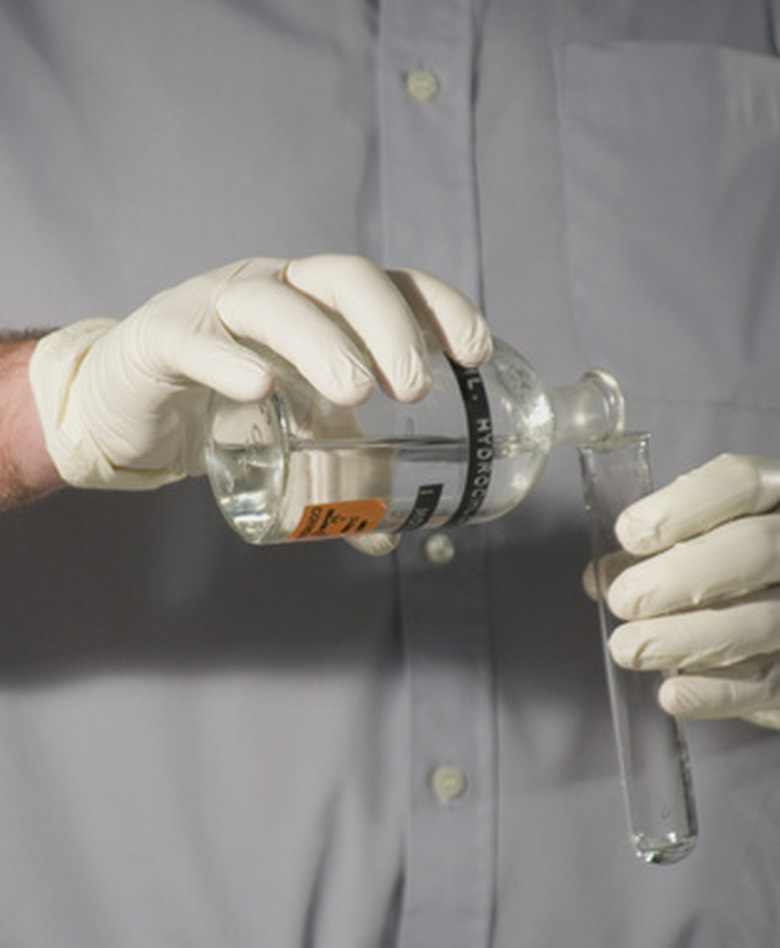How To Find Mass Percentage
Mass percentage is one of the best ways to express the concentration of a dissolved substance in a solution. Mass percentage refers to the ratio (expressed in percentages) of a mass of a compound in the solution to the total mass of the solution.
The Mass Percent Formula
The Mass Percent Formula
We want to state an empirical formula for the percent composition of a specific compound in a larger solution. We need the mass of each element (it can be in kg, atomic mass, or any other measurement of mass, as long as the units are consistent). The mass percent composition of element a in a chemical compound:
\(\text{Mass Percent} = \frac{a}{M} \times 100\)
where the numerator a is the total mass of the compound in question, and the denominator M is the total mass of the entire solution.
Example Mass Percent Calculation
Example Mass Percent Calculation
For instance, calculate the mass percent concentration for the solution obtained by dissolving 10 g of sodium chloride (NaCl) and 6 g of sodium bicarbonate (NaHCO3) in 120 g of water.
Add up the mass of all compounds in the solution, including the solvent, to calculate the total mass of the solution (including the mass of water). In the example, the solution mass is equal to:
\(M_\text{NaCl} + M_\text{NaHCO3} + M_\text{water} = 10 \text{g} + 6 \text{g} + 120 \text{g} = 136 \text{g}\)
Divide the mass of the first dissolved component by the solution mass, and then multiply the result by 100 to calculate the mass percentage. In our example, the first dissolved compound is NaCl; the mass percent is:
\(\frac{10 \text{g}}{136 \text{g}} \times 100\% = 7.35\%\)
Divide the mass of the second dissolved component by mass of the solution followed by multiplying by 100 to calculate the mass percentage. In this example, the second dissolved compound is NaHCO3, and its mass percentage is:
\(\frac{6 \text{g}}{136 \text{g}} \times 100\% = 4.41\%\)
Why Mass Percentage is Useful
Why Mass Percentage is Useful
Mass percentage can be extremely useful in separating out the influence of reactants in a molecular formula or compound. We might look at glucose, where we could use the mass of carbon, mass of hydrogen, and mass of oxygen to parse out the percentage composition of each element in glucose. When we dissolve solids in water, we can use the chemical formula and the mass of an element to find the ratio between the amount of solute and the amount of solvent. This is crucial to developing efficient and effective chemical reactions.
Molar Mass
Molar Mass
Molar mass is related to mass percentage, and it is used to calculate the ratio between the mass of a certain quantity of a substance to the number of moles of that substance. It is similar to a density value. To calculate the the molar mass of the compound, we take the mass of solution and divide by the number of moles of that solution:
\(M = \frac{m}{n}\)
where M is the molar mass, m is the mass of solution, and n is the number of moles. This returns a value for M in kg/mol (in SI units). This is also closely related to the molecular weight/molecular mass and the it is used to find the mass or number of moles for a given situation.
TL;DR (Too Long; Didn't Read)
A mol is defined as a specific number of atoms of an element, equivalent to Avogadro's number. It is the same number of particles for moles of oxygen or moles of uranium, but as each individual atom has different mass and properties, they vary.
References
Cite This Article
MLA
Fox, Oxana. "How To Find Mass Percentage" sciencing.com, https://www.sciencing.com/mass-percentage-6402083/. 29 April 2023.
APA
Fox, Oxana. (2023, April 29). How To Find Mass Percentage. sciencing.com. Retrieved from https://www.sciencing.com/mass-percentage-6402083/
Chicago
Fox, Oxana. How To Find Mass Percentage last modified April 29, 2023. https://www.sciencing.com/mass-percentage-6402083/
